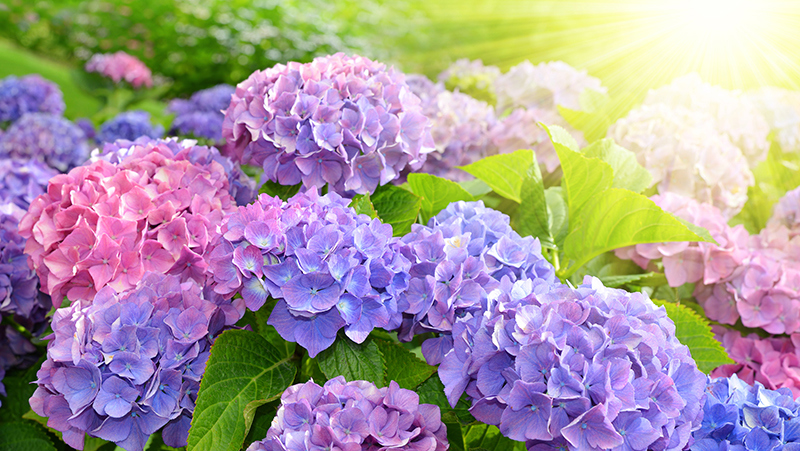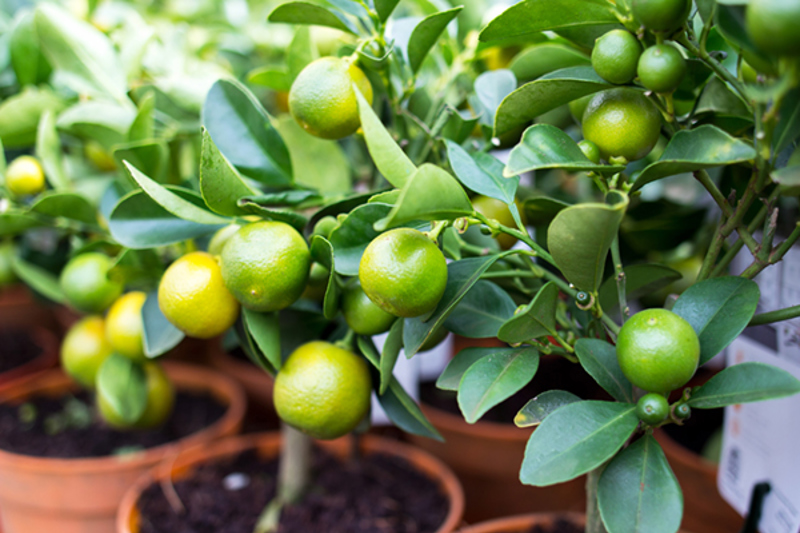Yates Account
Join now
Create a Yates account today!
Sign up to join the Yates Garden Club for monthly e-mails packed with seasonal inspiration, tips for success & exclusive promotions.
Plus if you’re a Garden Club member you can take part in the Yates Growing Community - a blog to share successes, get advice & win prizes in fun challenges along the way!

Forgot password
Enter the email address associated with your account, and we'll email you a new password.

Autumn is a great time to plant almost anything, from tiny seedlings to large trees. It’s also an ideal time to choose plants for their autumn foliage colours.
Soil temperatures are still warm enough to encourage root growth, and milder temperatures reduce water stress. Young plants planted during autumn have a good chance to settle in well, making optimum growth under and above ground before they have to cope with summer heat. Often spring arrives with a blast of early high temperatures, which stresses young plants if their roots aren't well established.
Flowers, Trees & Shrubs
In temperate and cool zones, autumn growth can be quite phenomenal, especially if mild temperatures are accompanied by good autumn rains. Roots become well established and foliage grows and hardens off before winter – stronger plants are more able to cope with extremes of temperature and dryness. Milder temperatures are kinder on gardeners too, after all…holes won’t dig themselves, you have to go outside!
Prepare Planting Holes
Whether you are moving plants, getting ready for the arrival of winter roses or deciduous trees and fruits, or taking advantage of the milder weather to plant a new garden, soil preparation is the key to success. Prior to planting, improve your site soil by adding organics, such as a good sprinkling of Yates Dynamic Lifter Organic Plant Food and dig it all in well.
Planting Out and Transplanting Trees & Shrubs
During the cooler months, it's an ideal time to transplant trees, shrubs and perennial plants. The plants suffer less water loss and transplant shock is minimised as growth slows over autumn and winter. Many evergreens and most deciduous plants can be moved with a good chance of success, providing it’s done carefully and at the right time of year. The exception is most native plants which don't like root disturbance, and respond by turning up their toes!
When it comes to large trees and shrubs, you’ll be limited by the weight you can lift. A root ball 1 metre across can be surprisingly heavy and it might need four people to lift it. If the root ball is larger than you can physically handle, you’ll have to cut the roots back to a manageable size, which risks causing irreparable damage. In this case, it may be better to consult an expert arborist for advice. Despite these watch-outs, there's a lot you can do to improve your chances of success at transplanting time, including:
- Use a sharp spade to dig around and then under to sever the roots. Try to take a sizeable root ball, including soil, so there are plenty of feeder roots still attached.
- Choose a cool day to move the plant. Water the root ball and the new planting spot and allow both to drain.
- Use heavy builder’s plastic or shade-cloth to slide the plant out of its old position and into the new spot OR wrap the root ball with plastic sheet or hessian to hold it together if you're moving it some distance.
- Prepare the new planting hole by mixing in a few handfuls of Yates Dynamic Lifter Organic Plant Food to help enrich and improve the soil.
- Position the plant in its new spot so it has the same aspect to the sun as before. Don't plant it deeper than it was before.
- If the tree has a 'graft union' (the bumpy bit at the base of the trunk, where the tree was grafted onto rootstock) make sure the bump stays well above the soil line.
- Backfill, gently compact and water in well with diluted Yates Thrive Natural Seaweed Tonic to help reduce transplant shock. If the root ball was very compacted, it might be a bit water repellent - make sure the root ball stays moist, especially in the first couple of weeks.
- Trim any damaged shoots. Apart from this, these days most experts suggest it’s best not to cut back the foliage.
For planting out new trees from pots or polybags, follow the directions above, but begin at the 'digging the hole' stage. Try to minimise disturbance to the root ball when removing the tree from its container. If it doesn't want to come out, if it's in a polybag just cut the bag away, or if it's in a pot you can roll it gently back and forth on the ground to loosen it. If it's 'pot-bound', with roots circling the outside of the root ball, very gently tease out the roots with your fingers.

Autumn Flower Maintenance
The drying heads of hydrangea flowers are an autumn reminder to begin monthly applications of Yates Hydrangea Blueing Liquid Aluminium Sulphate or Yates Hydrangea Pinking Liquid Lime Dolomite if you want to alter or intensify the flower colours in summer, by adjusting the pH of the soil around the roots. Dry flower heads can remain on the plants until winter, or pruned back to just above two fat leaf buds.
Cheery chrysanthemums are a classic Mother’s Day flower and a symbol of happiness and longevity in Japan. Potted chrysanthemums are a great gift, whilst garden chrysanthemums fill beds with colourful blooms. Indoors, choose a well-lit position for potted chrysanthemum and water every few days, but don’t leave them standing in saucers of water. Liquid feed using Yates Thrive Indoor Liquid Plant Food every two weeks, then after 4-6 weeks, as the display finishes, trim back spent stems at the base and plant outside in a sunny position with well-drained soil. Water well through summer, tip prune for compact bushy growth and liquid feed every 4-6 weeks and enjoy the show again next autumn.
Winter & Spring Flowers to Sow
Sow seeds of delightful winter and spring flowers to brighten up the garden. Many flowers can be sown directly where you want them to grow in the garden, including hardy and versatile sweet Alyssum Carpet of Snow, pretty blue Forget Me Not Little Bluebird and Iceland Poppy Artists Glory – which are also great for picking. For best results barely cover the small seeds with a fine layer of Yates Black Magic Seed Raising Mix and keep moist.
May is still a good month for sowing peas, so pop in some Sweet Pea Blue Reflections in spring they produce a bounty of scented blooms for picking. It’s not too late to sow pretty Pansy Imperial Antique or Wildflowers of the World in seed trays ready for planting out once seedlings have germinated. Add some colourful Calendula Pacific Beauty to the vegie patch where their bright yellow and orange flowers add winter and spring colour, and also attract bees and other beneficial insects.
Snails and slugs can come out of hiding in autumn and devour precious young seedlings overnight. Protect plants using Yates Blitzem Slug Snail Pellets, which attract and kill snails and slugs. Begin liquid feeding every two to three weeks after seeds have germinated using Yates Thrive Fish Blood Bone Plant Food Concentrate, which encourages healthy leaf growth and lots of beautiful flowers.

How About Potted Citrus?
Citrus are handsome ornamental trees – with glossy green foliage, scented white blossoms and colourful fruit – a fabulous choice to display in large pots. And it's a great time to pot one up for yourself.
Here are our top tips for keeping potted citrus healthy and productive.
- Choose a spot which gets plenty of sun – at least 6 hours daily.
- Pot size: 400mm to 500mm sized pots are ideal. Select decorative plastic, timber half barrels, cement or stone pots and ensure there’s plenty of drainage holes in the base and fill with premium quality potting mix.
- Regular watering of potted citrus is important. When planting, water in with a diluted solution of Yates Thrive Natural Seaweed Tonic to help reduce transplant shock. This can also be reapplied in monthly during the growing season and before and after periods of stress (e.g. extreme temperatures).
- Little and often is the key to feeding potted citrus, so liquid fertiliser is the ideal way to deliver nutrients regularly. Yates Thrive Fish Blood & Bone Plant Food is a complete food, containing a balance of nutrients for healthy green foliage and juicy more abundant fruit. The liquid is taken up by both the roots and the foliage so you see results sooner.
- If you are finding a potted tree isn't producing much fruit, or the fruit isn't very juicy, try Yates Liquid Potash Fruit and Flower Booster. It's rich in potassium, to improve fruit quality and encourage prolific flower development. It's one our favourite 'secret sauce' fruit enhancers for citrus (and tomatoes).
- Potting citrus will restrict their growth, but there are dwarf citrus available, which don't compromise on fruit size or quantity. Typically labelled Dwarf, they’re in plentiful supply during autumn and winter. They do well in sunny well-drained gardens too!
Makrut Lime is a delightful citrus tree to grow in a pot. It’s grown primarily for its highly aromatic leaves – just one or two added to your curry or stir fry brings an authentic Asian flavour to home-cooked meals. Regular feeding with Yates Thrive Fish Blood & Bone Plant Food encourages soft new growth. The hard green knobby fruits are great for zesting but filled with seeds, so if you like lime juice (or G&Ts), grow a delicious Tahitian Lime as well.
Scale – check citrus trees for scale insects. They look like small flattened dome-shaped bumps on stems, leaves or fruit. Types and colours of scale insects vary – they can be white, red, brown or pink, and can appear smooth or even look like cotton wool. A waxy or hard coating develops on adult scale insects and they rarely move. Sooty mould and ants are commonly seen where scale infestations occur. Control scale by spraying with ready to use Yates Natures Way Organic Citrus, Vegie Ornamental Spray.

















Share
Share this article on social media